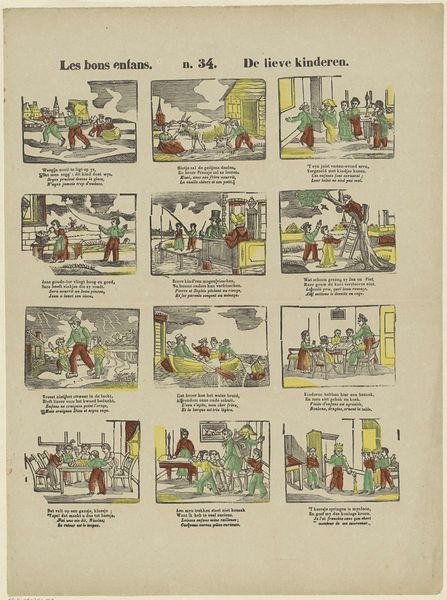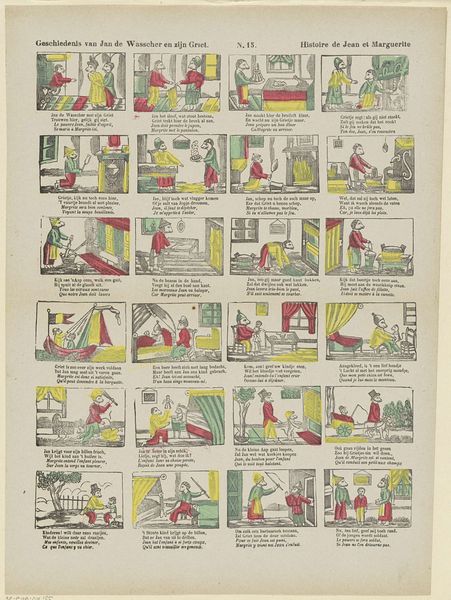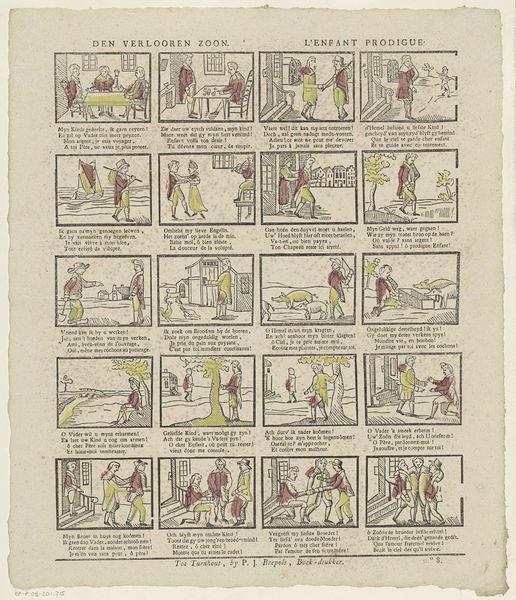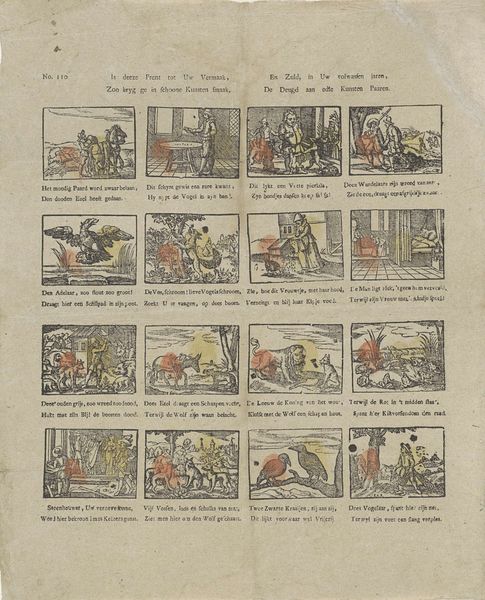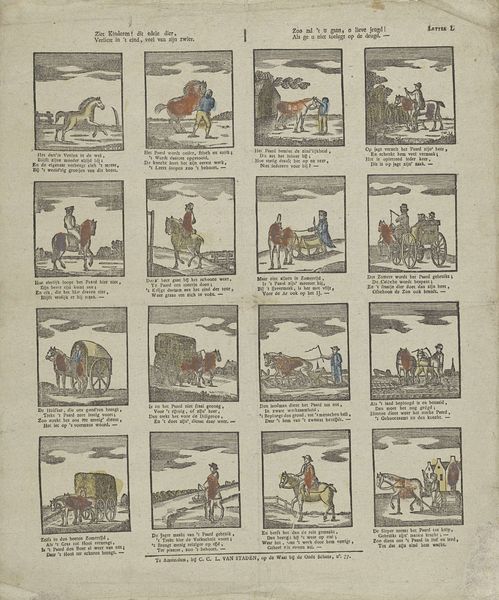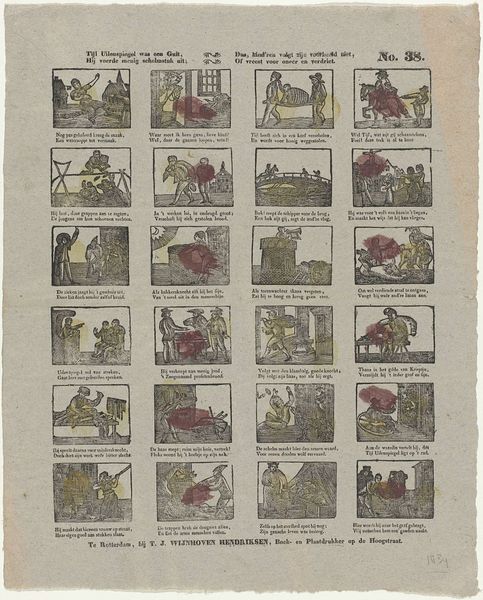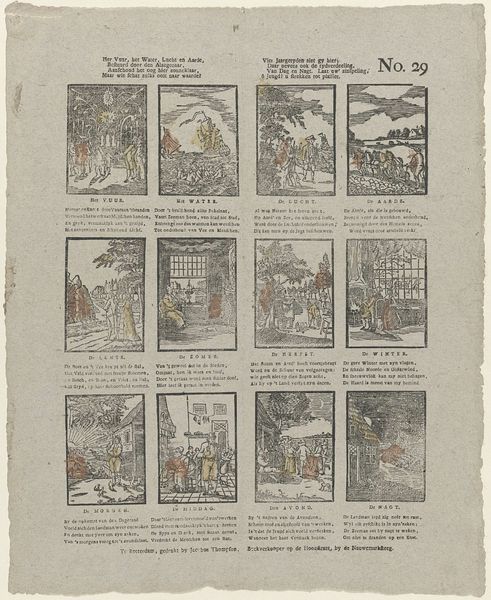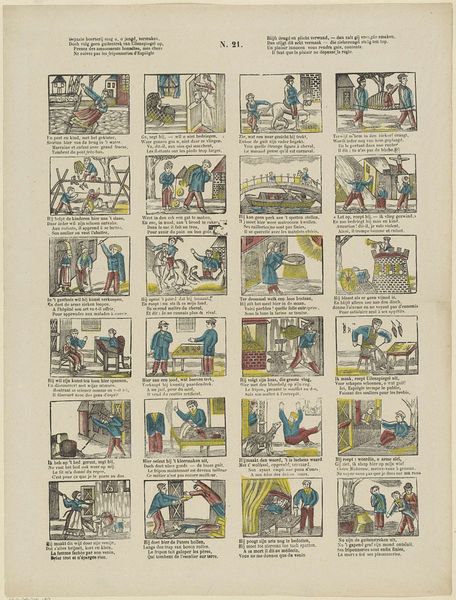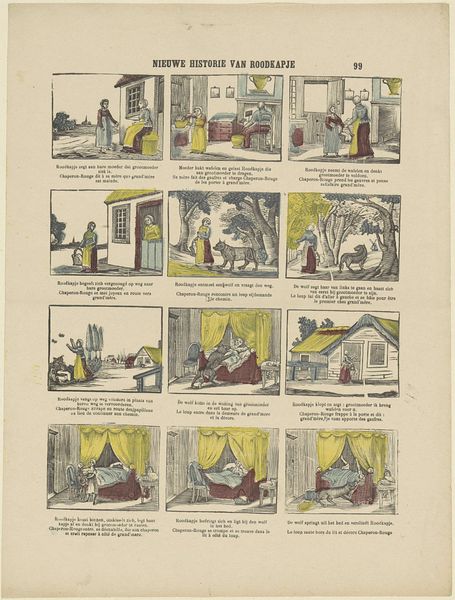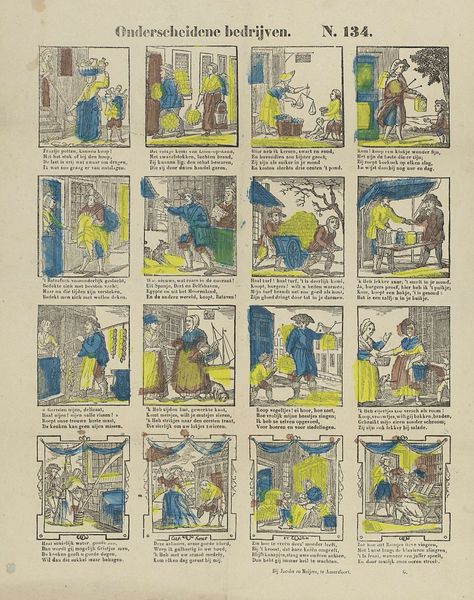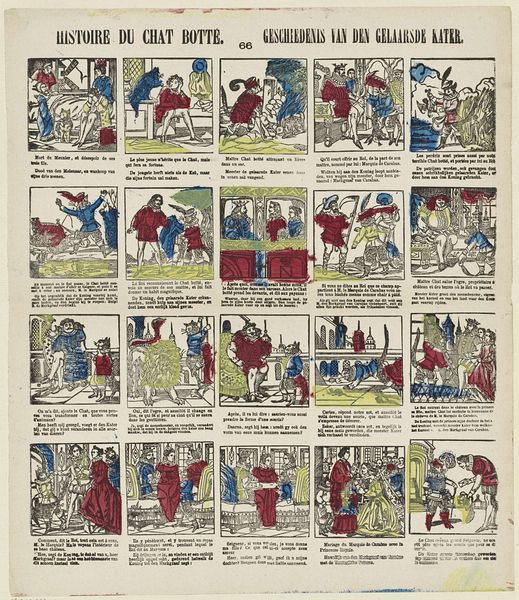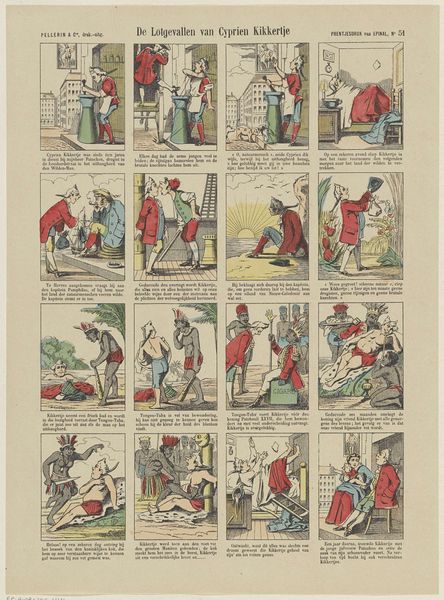
Zie Gulivers geval. / Beschreven in dez' print, / De landen t'aller wegen / zyn in de maan gelegen / Jeunesse dans ce tableau admire les passages / Qu'éprouva Guliver, dans ses curieux voyages 1800 - 1833
0:00
0:00
philippusjacobusbrepols
Rijksmuseum
print, engraving
#
narrative-art
# print
#
old engraving style
#
comic
#
engraving
Dimensions: height 399 mm, width 340 mm
Copyright: Rijks Museum: Open Domain
Curator: This print, housed here at the Rijksmuseum, presents “Zie Gulivers geval,” or “See Gulliver's Case,” an engraving created by Philippus Jacobus Brepols between 1800 and 1833. Editor: My first impression is that it resembles a storyboard, almost like an early comic strip, presenting the adventures of Gulliver in a series of small scenes. It strikes me as playful and a bit naive. Curator: It's fascinating how the artist chose to depict Gulliver's travels using this grid format. We see the progression of his encounters— Lilliput, Brobdingnag, the moon… Each panel a vignette, referencing familiar parts of the story but rendered in this distinctive, slightly dreamlike style. Editor: The choice of medium certainly impacts the interpretation. Engravings have such a distinct visual language— that dense network of lines and the subtle way the light falls across the image, creating a texture and depth. It lends a weight and significance to these seemingly light-hearted adventures. Curator: And let’s not forget the symbolism. The moon, appearing in the title, becomes a reoccurring motif throughout. Given the period, one could argue that it serves as commentary, maybe social or political satire about countries so removed from the truth of human affairs. The moon was often equated with madness, emotional change, and illusion. Editor: Exactly! Those seemingly simple depictions carry deeper symbolic weight than immediately meets the eye. The image isn’t just illustrating a story; it's providing a perspective, perhaps a commentary on humanity’s follies. This comic format allows those political statements to become less offensive because of the way it seems unserious and silly. Curator: It really invites one to consider how narratives persist and morph over time. Here we have Gulliver, a character deeply embedded in cultural memory, presented in a form that speaks to both entertainment and potentially subversive commentary. Editor: Yes, revisiting it today has illuminated layers I hadn’t initially perceived—the artistry within the structure, the undercurrents of societal critique… it transforms what might seem a simple historical piece into a rich tapestry of artistic expression.
Comments
No comments
Be the first to comment and join the conversation on the ultimate creative platform.

